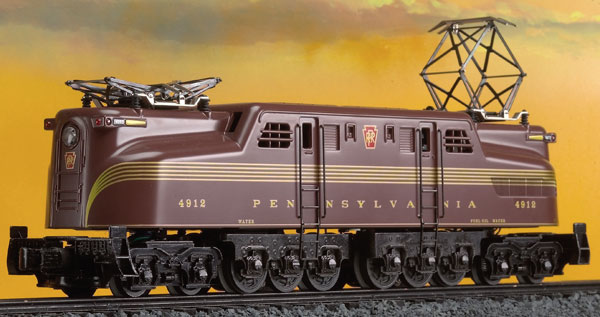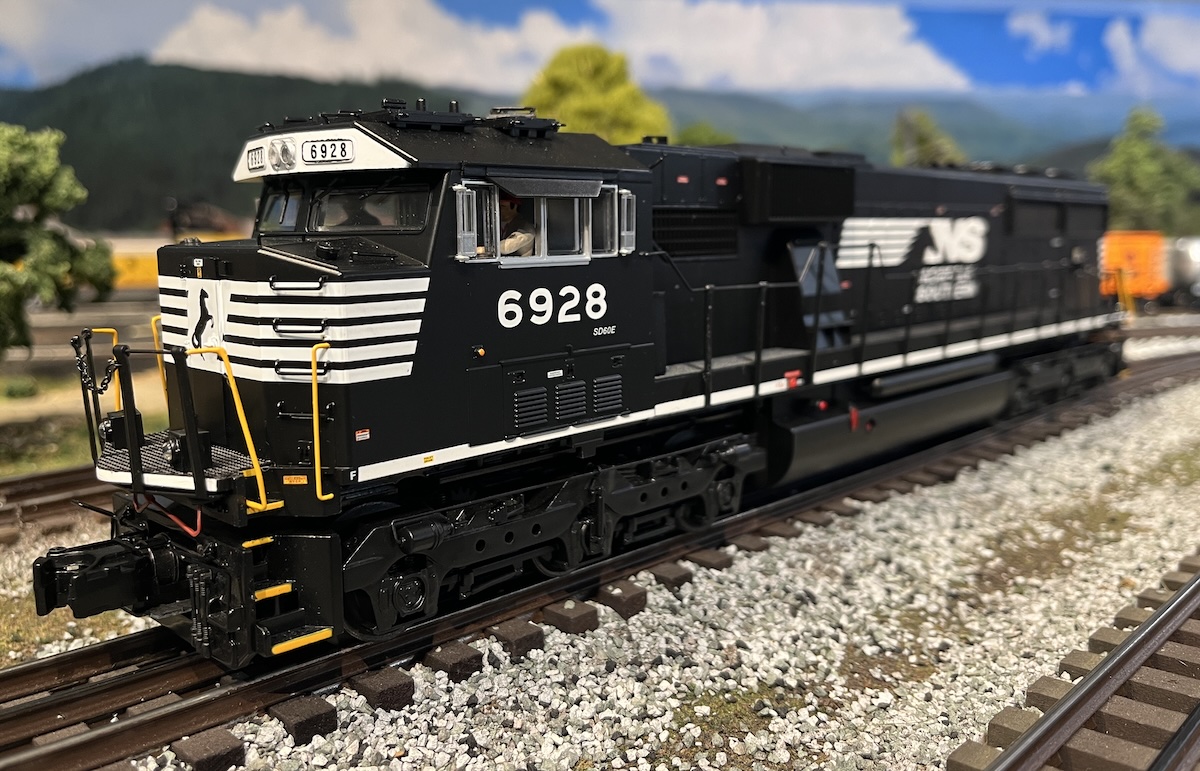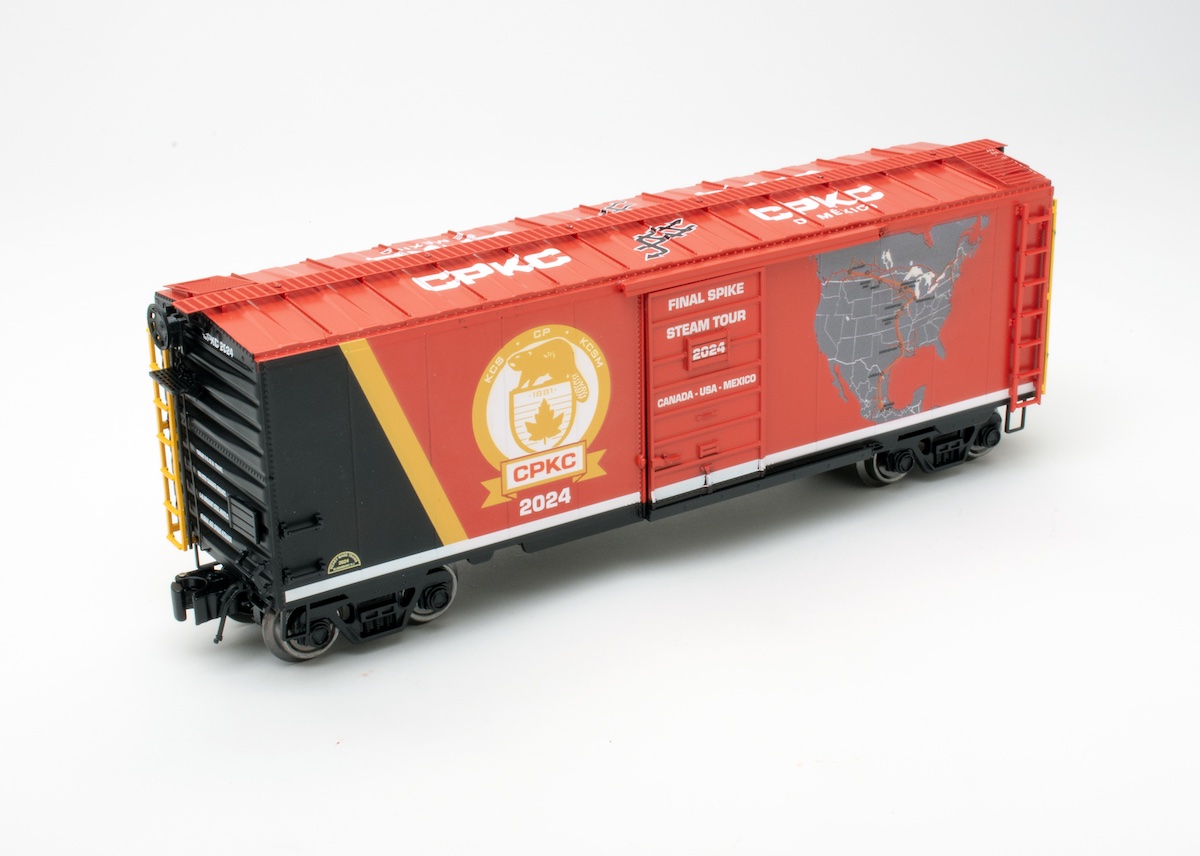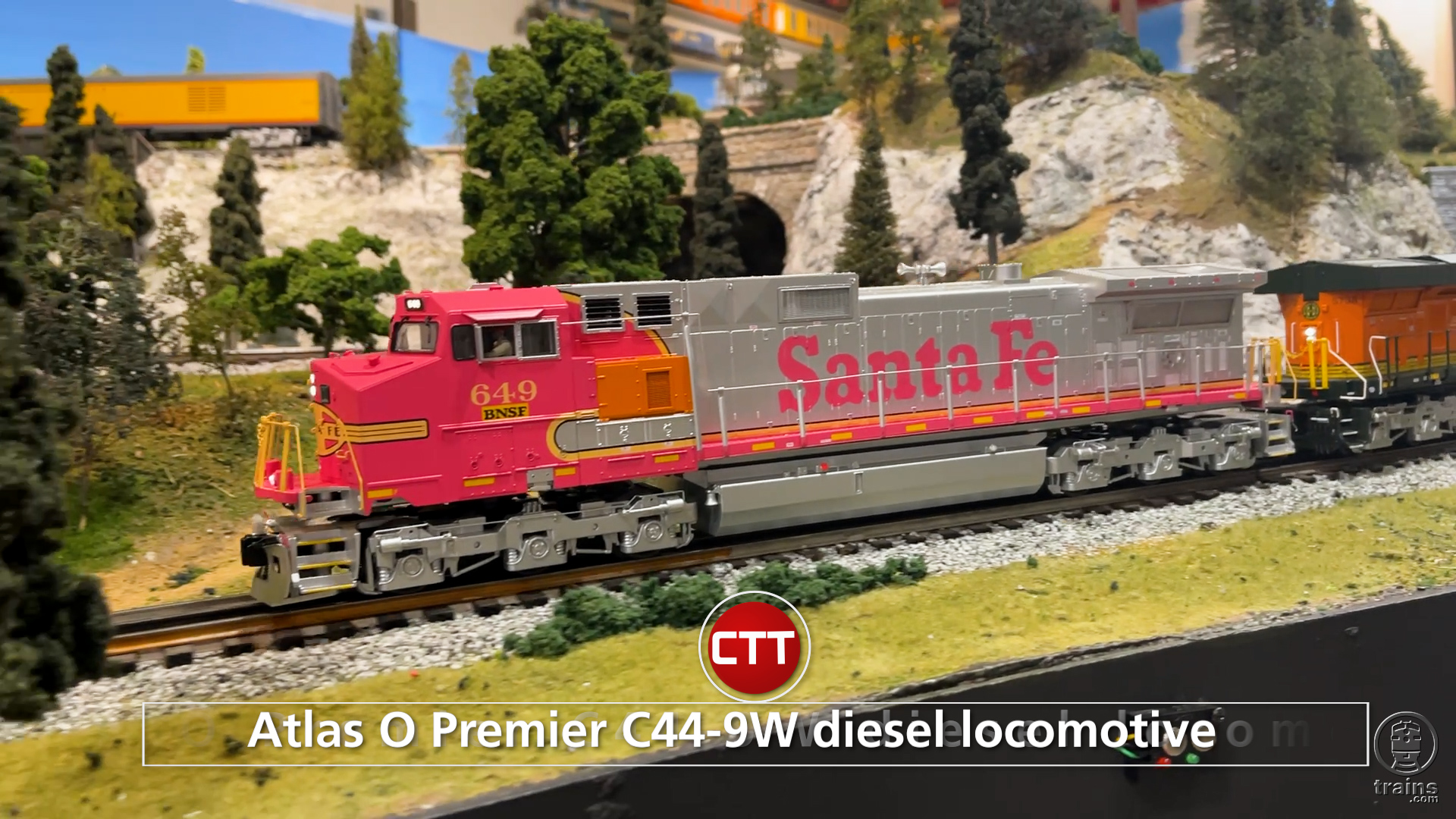K-Line has made some key modifications to its GG1, which puts this new O gauge version at the front of the pack. K-Line has made a few external changes to this small-radius wonder that improve the look of the locomotive, some changes on the inside for enhanced control, and a price that will have you wondering if you read the fine print correctly: Just $100 for the conventional-control horn-only version.
The locomotive also can be purchased with a Lionel RailSounds/TrainMaster upgrade outside the club structure, but at a higher price. What’s the catch? None, and the $100 price includes Collectors Club membership.
The model
K-Line’s version of the GG1 is ahead of the crowd for one simple reason: It has side doors cast into the die-cast metal shell, something that the postwar Lionel version and the modern-era RailKing and Williams editions lack.
The K-Line die-cast metal shell is a nice, seamless product that’s smooth to the touch. There’s a nice bit of texture by way of cast-in screens, ducts, and window bars. Each end of the shell has rectangular frames for marker lights and number boards. The body has add-on handrails and steps, as well as a traditional pair of horns and, of course, two pantographs.
The truck frames are die-cast metal and have a fair amount of detail cast into them. I especially like the cast-in markings on the drive wheels.
The K-Line GG1 comes in Brunswick green and Tuscan red. Our sample was Tuscan with the Pennsy five-stripe scheme.
Paint application was flawless, with the spot where the end stripes meet the side stripes virtually unnoticeable.
On the test track
We tested the GG1 equipped from K-Line with Lionel’s TrainMaster Command Control and RailSounds systems (this version has remote-operated electro-couplers on both ends). The locomotive weighs 5 pounds, 14 ounces. Its low-speed average is 19.9 scale mph, and the high-speed average is 124.3 scale mph.
Drawbar pull for the die-cast metal, two-motored beast is 1 pound, 11 ounces. With our 25-car mixed make and vintage freight in tow, the GG1 performed at a breezy 105.5 scale mph.
The GG1 went around several staff layouts, and the feedback was positive, although when pulling a heavy train up grades and around curves it seemed to need more throttle input than similar engines did. Also, in command mode, the headlight on our sample flickered constantly.
The engine has two pickup rollers 4 inches apart. One staffer noted that the engine had a problem on MTH RealTrax switches, going off the track when running on the curved routes of both O-31 and O-42 switches. Keep in mind the GG1 has 20 wheels – a lot for roughly laid track.
The sounds of the RailSounds-equipped GG1 match the prototype, but as with most electrics, they are pretty unexciting.
It has nothing to do with the quality of the RailSounds in the K-Line locomotive, just the reality that humming electric engines are audio-challenged compared to chuffing steamers and roaring diesels. Alas, that’s the plight of the electric loco.
The bell and horn are clear and crisp, although the horn sounds just like the word “honk” spoken out loud. The usual TrainMaster features, such as firing the couplers, worked each and every time.
So what’s the bottom line? For the price of a couple of boxcars you can get a nicely improved, die-cast metal GG1 with twin can-style motors in the best postwar-appearance tradition. The locomotive can also be purchased with sound and TMCC. Not bad for joining a club!















this engine was a fantastic buy and k-line made it possible for me to get back into o gauge trains, because of the reasonable price